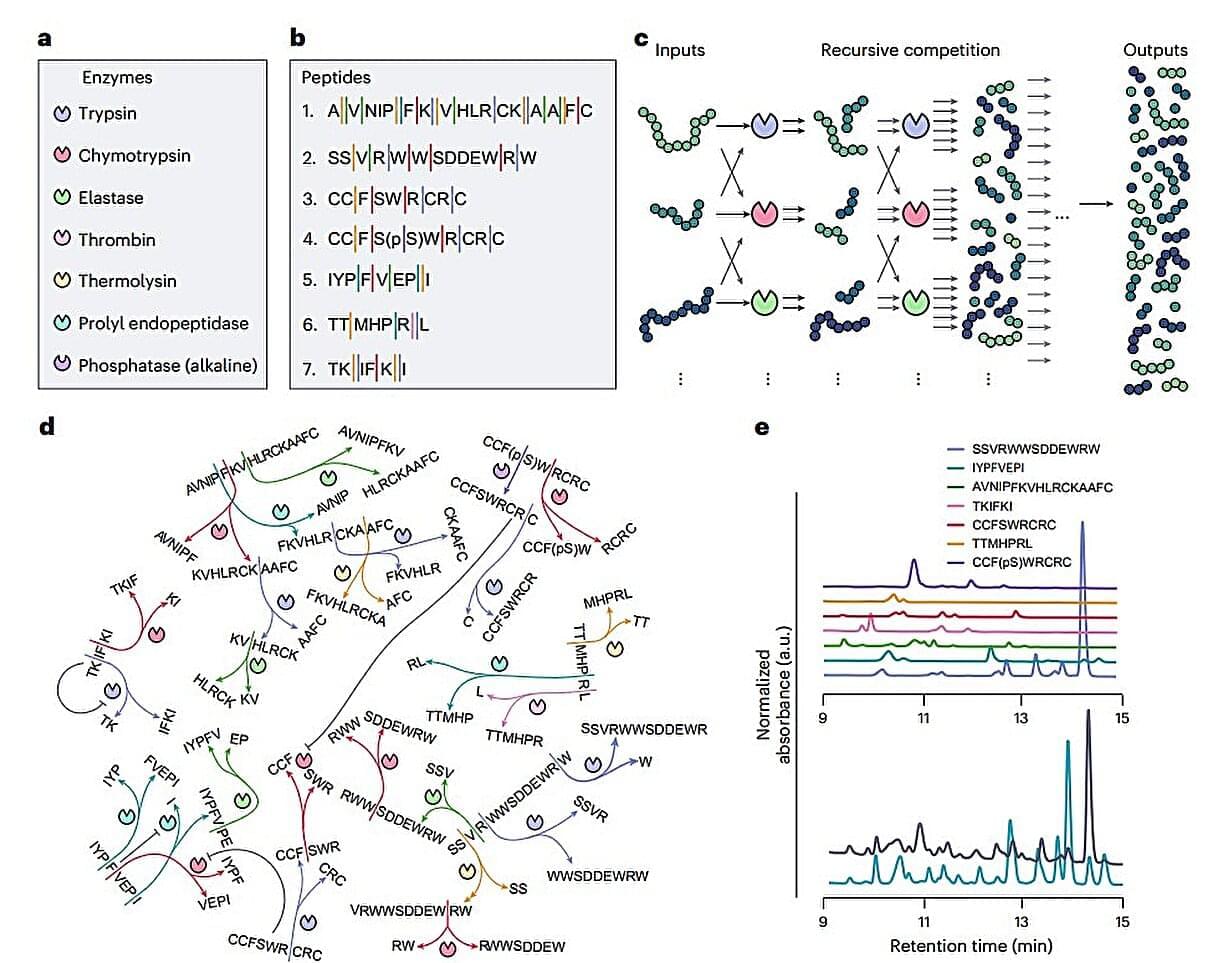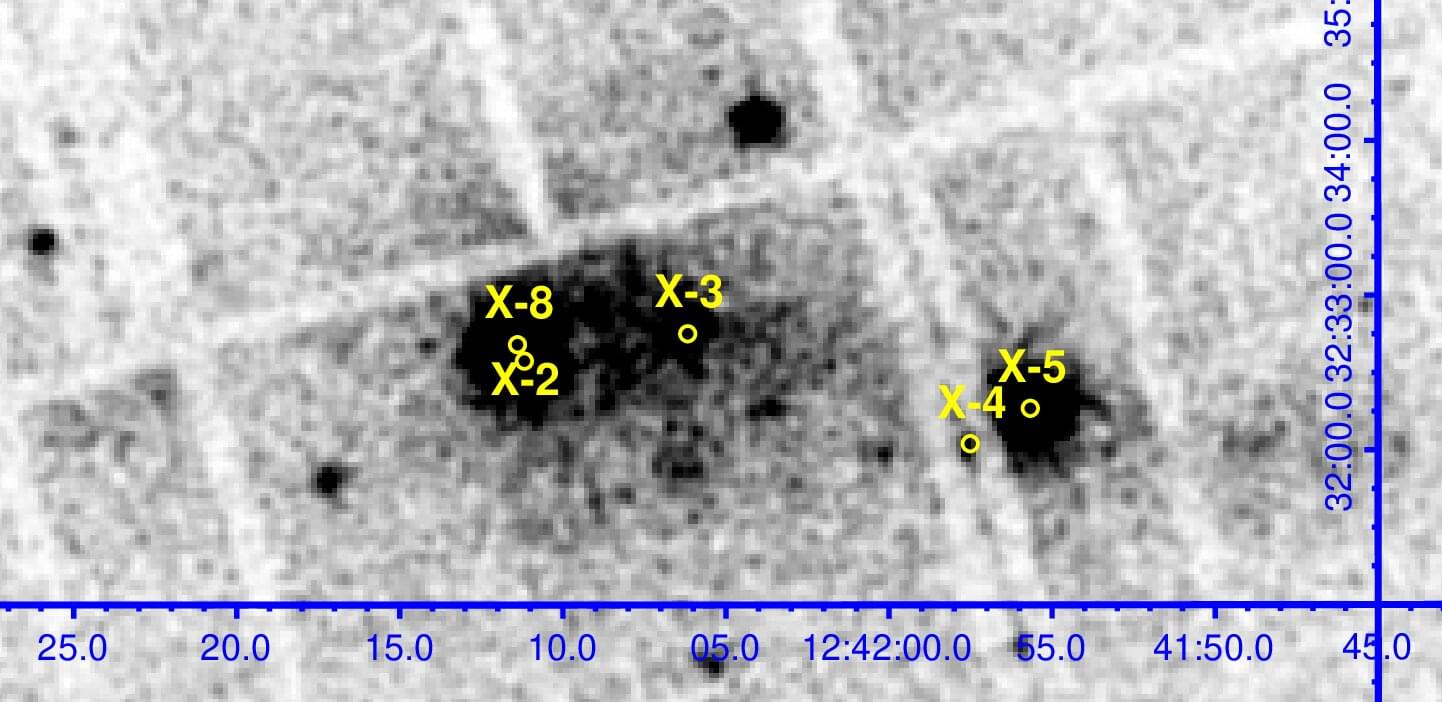Hektoria glacier on the Antarctic Peninsula retreated 25 kilometres in just 15 months. Its rapid melt could have implications for other glaciers and the rate of sea level rise



The ability to respond to changing surroundings was once considered exclusive to complex living organisms. Then came computers, specially designed for stimulus–response tasks, which can take in signals from their environment and choose what to do next based on the instructions already written into them.
Scientists have long wanted to replicate this kind of behavior in chemical systems. Life and computers both need many parts working in sync to make decisions, so expecting a handful of chemicals in a test tube to do the same seemed quite far-fetched.
Not anymore. A team of researchers from the Netherlands and Australia has developed a novel chemical network where different peptides compete for enzymes—specifically proteases arranged in a network. This competition causes the chemical mixture to reorganize itself, forming an enzymatic network that adapts to the external environment.

Using ESA’s XMM-Newton satellite, European astronomers have observed ultraluminous X-ray sources (ULXs) in the galaxy NGC 4631. As a result, they detected a new pulsating ULX, which received the designation X-8. The research is published November 6 on the arXiv preprint server.
ULXs are point sources in the sky that are so bright in X-rays that each emits more radiation than a million suns emit at all wavelengths. They are less luminous than active galactic nuclei, but more consistently luminous than any known stellar process. Although numerous studies of ULXs have been conducted, the basic nature of these sources still remains unknown.
Some persistent ULXs exhibit pulsations and therefore are categorized as ultraluminous X-ray pulsars (ULXPs). Discovering and studying objects of this type could be crucial for advancing our understanding of accretion physics—for instance, mechanisms that enable the sustained X-ray luminosities of ULXs which exceed the Eddington limit.
Cancer cases among under-50s around the world appear to have risen sharply in the past 30 years. Studies show there are rising numbers of breast, colorectal and other cancers in people in their 20s, 30s and 40s. But what is driving the increase and can anything be done to stop it?
Presenter Jonny Dymond speaks to freelance health journalist David Cox about what scientists think could be driving this worrying trend.
00:00 Intro.
01:20 Natalie’s story.
02:24 When did we find this trend?
03:36 Types of cancer.
04:53 Testing in younger people.
05:54 Where is this happening?
06:29 Why is this happening?
07:45 What are the causes?
11:05 Cancer risk for women.
13:26 What is being done?
17:18 Goodbye.
Image credit: Getty Images/Choja.
Watch more episodes of The Global Story here 👉🏽 • The Global Story.
You can listen to more episodes of The Global Story here. Making sense of the news with our experts around the world. Insights you can trust, Monday to Friday, from the BBC 👉🏽 https://www.bbc.co.uk/programmes/w13x… This is the official BBC World Service YouTube channel. If you like what we do, you can also find us here: Instagram 👉🏽 / bbcworldservice Twitter 👉🏽
/ bbcworldservice Facebook 👉🏽
/ bbcworldservice BBC World Service website 👉🏽 https://www.bbc.co.uk/worldserviceradio Thanks for watching and subscribing! #BBCWorldService #WorldService #cancer.

The team’s solution hinges on a clever trick of synthetic biology called “growth-coupled biosynthesis.” Most biomanufacturing efforts try to coax microbes into making a product as a side gig. But the bacteria often resist, directing their resources toward survival instead.
This research flipped the incentive. The scientists engineered a strain of Pseudomonas putida that could only survive if it produced xanthommatin—or more precisely, if it also made a byproduct called formic acid in the process. This formate, a one-carbon molecule, fuels critical metabolic cycles. No formate, no growth.




The menopausal transition, or perimenopause, is a 2-to-10-year stretch of hormone irregularity leading up to menopause, when menstruation ceases permanently. It is a time that can come with a variety of challenging symptoms—including hot flashes, sleep disturbances and problems concentrating—as well as often underrecognized mental health challenges, such as heightened irritability, mood swings, increased anxiety and panic attacks. Importantly, a woman’s risk of depression grows two to five times higher than before or after the transition. Suicidal ideation and suicide rates in women are highest between the ages of 45 and 55.
What exactly is happening in the perimenopausal brain to trigger these increased risks? We know that perimenopause represents a major “neurological transition state”; the brain is exposed to drastically changing levels of ovarian hormones, similar to puberty but in reverse. As ovarian function declines, so do levels of the ovarian hormones estradiol and progesterone. The pituitary gland tries to compensate, resulting in erratic hormone fluctuations. These changes are sensed by the ovarian hormone receptors present throughout the brain, particularly in limbic areas important for emotion regulation and memory, such as the hypothalamus and the hippocampus. Neuroimaging studies in living humans have reported changes in estrogen receptor availability and brain metabolism across the menopausal transition.
We also know that estradiol acts as a potent neuromodulator in the brain, affecting multiple neurotransmitter systems, including the serotonergic, noradrenergic and dopaminergic systems, and neuropeptides, such as brain-derived neurotrophic factor—all of which are known to be linked to depression and anxiety disorders. Mouse studies have revealed that hormone shifts across the ovarian cycle induce changes in chromatin organization that underlie changes in hippocampal gene expression, synaptic plasticity and anxiety-related behavior.
It seems likely that the mental health changes observed during perimenopause are related to the shifts in hormones and their receptors in the brain. Few studies, however, have explored the biological mechanisms underlying the increased psychiatric risk. Understanding these changes is essential both for developing new treatments for women in perimenopause who are experiencing mood and memory issues, and for understanding how these changes affect long-term brain health; metabolic changes during perimenopause are thought to increase the risk for Alzheimer’s disease, for instance.
We know little about the mechanisms underlying well-known perimenopause symptoms in the brain. More research—in animals and humans—is essential.
Interested in learning more about tackling the major health challenges of today? Attend our 2025 International Health Lecture: https://bit.ly/3JHOOrp.
Professor Rajesh N Kalaria FMedSci speaks about the global severity of stroke and dementia in society and goes over the findings and lessons from the CogFAST study – cognitive function after stroke study – outcomes of which might mean something for each one of us.
“We can’t change our genes, and we can’t change our age but we can modify every other risk factor for stroke,” he says. He discusses findings that show the impact of modifying some risks factors such as hypertension, and diabetes in elderly post-stroke survivors.
This talk was part of the event \.